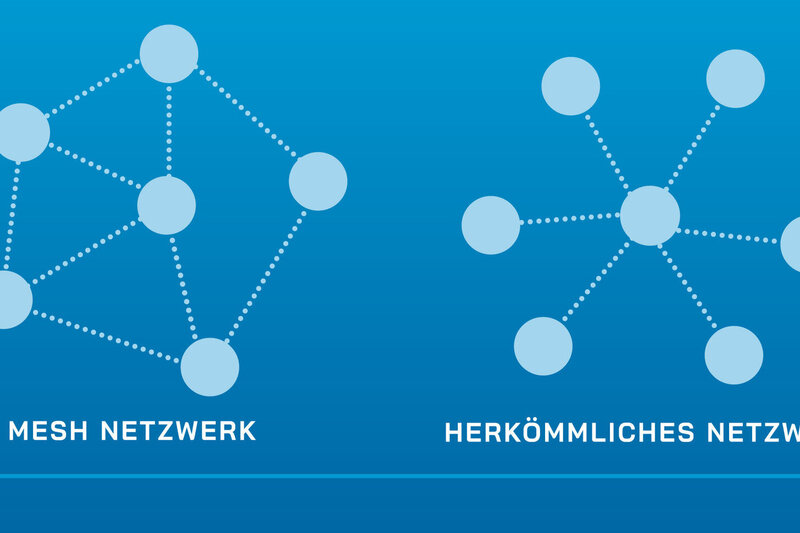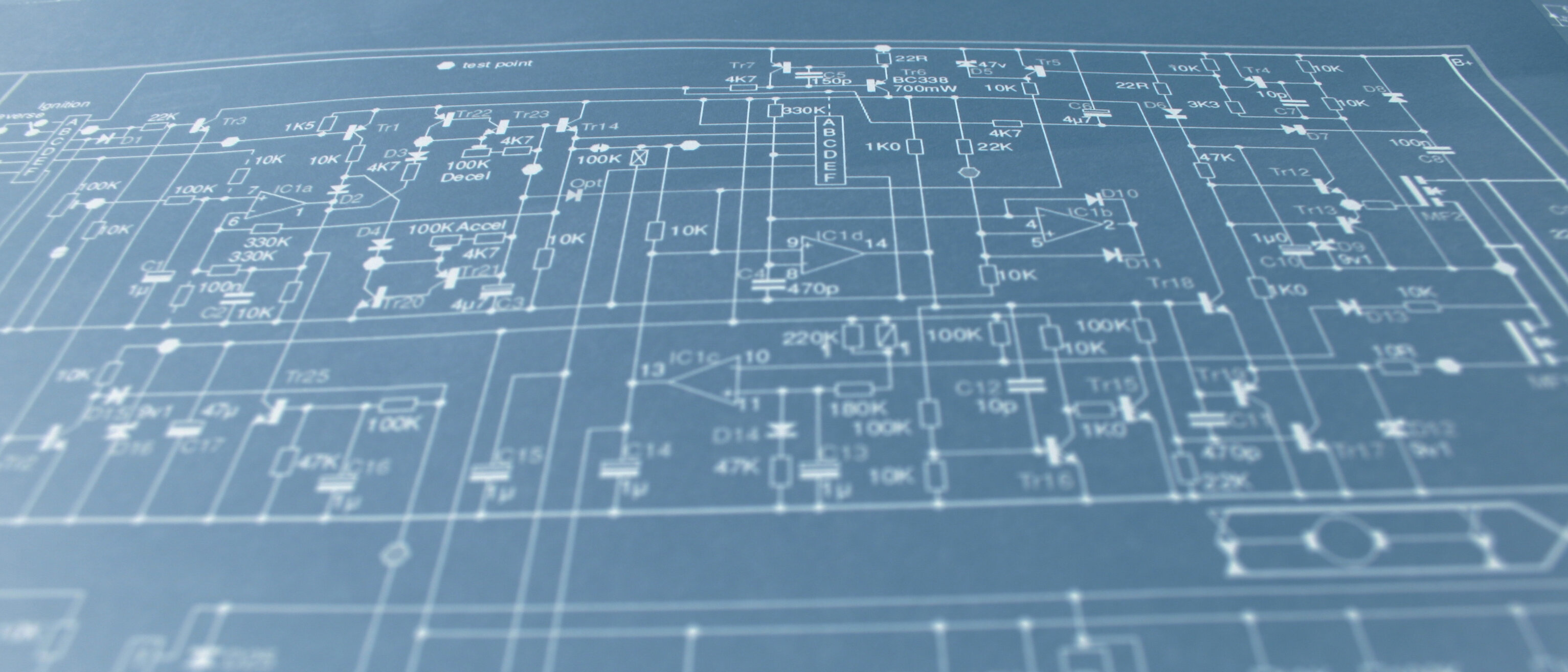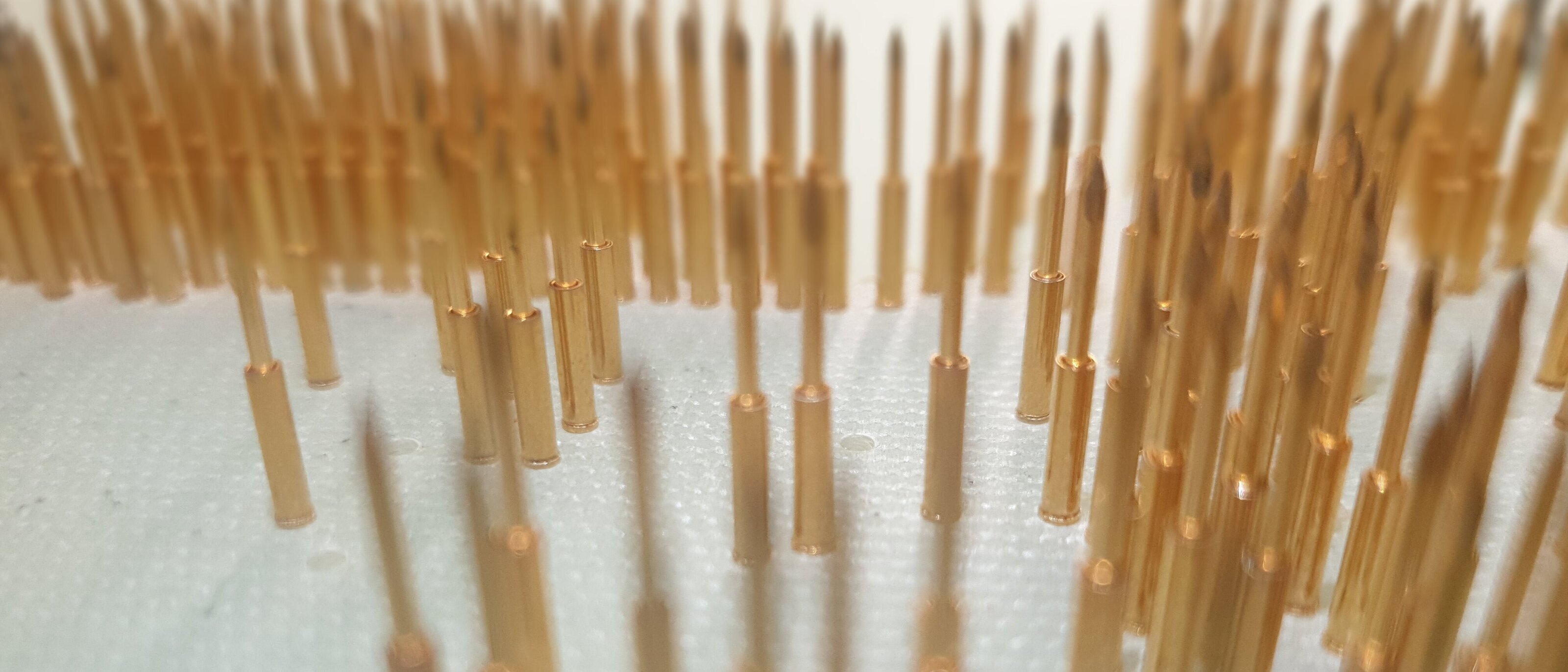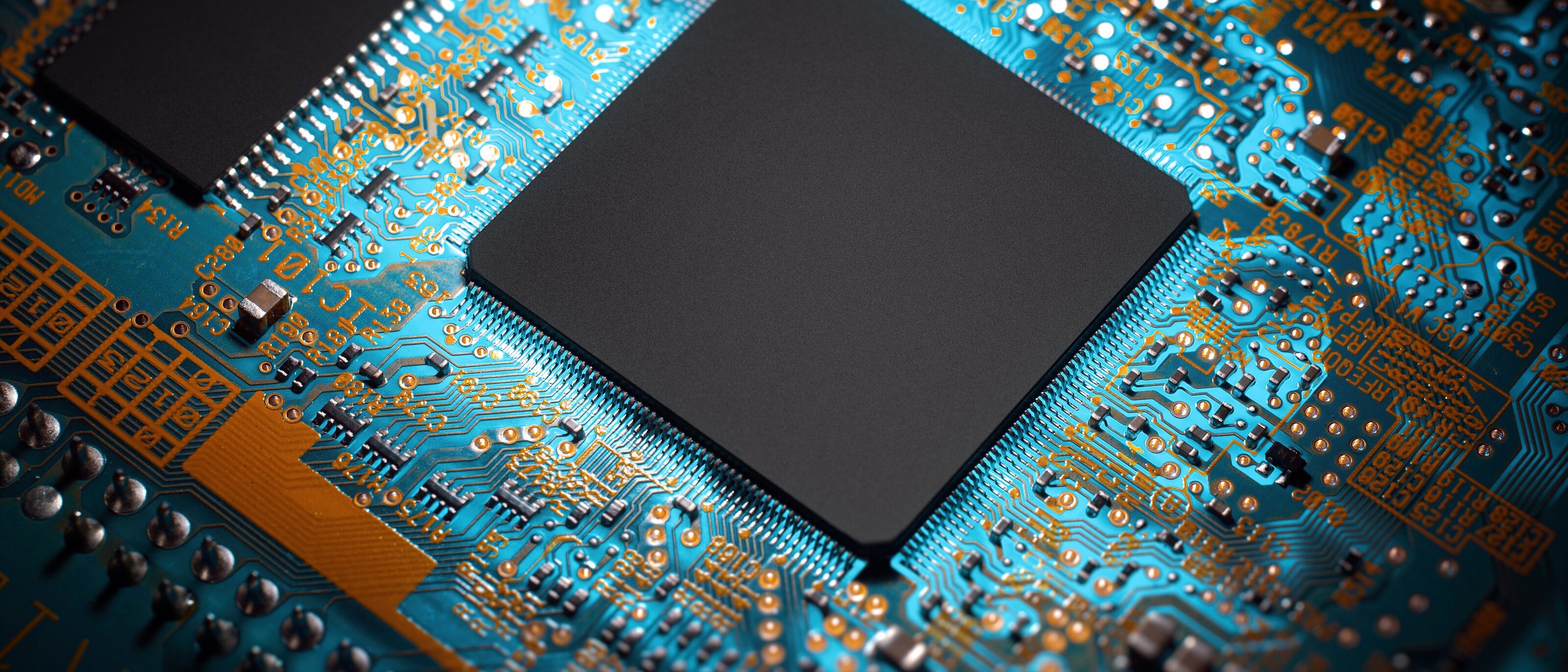Long distance radio vs. short distance radio or 5G vs. Meshnet

A comparison of 5G technology
5G - the fifth generation of mobile technology is currently the talk of the town. But is the new standard really the ultimate for the Internet of Things? We show the technology comparison.
Wireless networks can mainly be described by three technologically and economically important properties: Range, data transmission rate and energy consumption.
Improving one property negatively impacts one or both of the others. An increased data transmission rate is usually accompanied by a reduction in range or increased energy consumption.
This interplay is best illustrated by appropriate current and relevant examples:
- LTE: Medium energy cost, long range, low data transfer rate.
- Wi-Fi: High energy costs, medium range, high data transmission rate
- Bluetooth: Low energy cost, low range, low data transfer rate
5G - The replacement for LTE
5G is the technological successor to the currently used and widespread LTE technology. Primarily, 5G is about increased speed. Thus, this offers a data rate about 10-20 times higher than LTE. It also offers improved features such as reduced latency, lower energy consumption and the ability to serve far more devices per base station at the same time. The new mobile technology is very flexible and can be individually adapted to existing needs. Conceivable areas of application include augmented reality, working with drones and autonomous driving.
5G - What is needed?
Completely new hardware is needed for 5G across the board. This includes adapted terminals, radio masts with a different antenna and fast backbones such as fiber optic lines. Although it is basically a wireless technology, transmitting stations and masts must be equipped with sufficient bandwidth through wired connections so that all communication subscribers can be served quickly enough. If this is not the case, data will arrive at and from the transmission tower at increased speed, but will then be slowed down considerably by an old copper line. The entire speed advantage over LTE would thus disappear.
In addition to the new transmission towers, they also have to be built at a much smaller distance from each other than is currently the case with LTE. The fact that 5G transmits on a somewhat higher frequency range also reduces the range. Some estimates assume that a transmitter mast would have to be built approximately every kilometer in Germany (urban areas) to make 5G available nationwide - an impossible goal.
The biggest problem with 5G use is therefore the current lack of expansion. In fact, the technology cannot be used at the moment because there are neither providers nor transmission towers. This means that 5G unfortunately remains a vision of the future.
Mesh networks
In addition to 5G, there is also the option of using mesh networks for wireless communication. Meshnet can be implemented with different wireless connection standards. These include the widely used Bluetooth, but also lesser-known standards such as ZigBee or Wirepas Mesh. There are no fees for the transmission.
Since a mesh network generally uses freely usable radio frequencies, it inherently has basic properties, such as a relatively short range and a lower data transfer rate. On the other hand, it stands out due to its low energy consumption.
A mesh network is formed by a network of nodes that are linked to each other. So if node A wants to send something to node B and they are not directly connected to each other, the communication runs through intermediate nodes until it reaches its destination. The following figure shows the possible structure of a mesh network:
There is a possibility that all nodes are connected to each other, this corresponds to a full mesh. As soon as a node is only connected to "many" others, this is considered partial meshing. Full meshing ensures optimal availability, as data transfers are not interrupted by the failure of network nodes, while partial meshing leaves gaps in the network, but the setup effort and thus the costs are much lower.
In any case, by using a mesh network, a limited area, such as a factory plant, can be networked and monitored over a wide area. Possible areas of application are: Asset tracking, retrofit including control tasks, condition monitoring, smart building with e.g. lighting control and predictive maintenance. Devices that are distributed over a very large spatial distance can only be connected inadequately via a mesh network.
Flexibly adaptable routing protocols
Regardless of which type of meshing is used, the network can act and react in different ways through customized routing protocols. Examples include the following:
- If one node fails, the network can establish an indirect connection through other nodes, thus maintaining the reliability of the network.
- It is possible to implement load balancing in which each node in the network is used equally. This allows the bandwidth to be optimally utilized. It also distributes energy consumption evenly across the network.
- The communication cycles of the nodes can be reduced, thus reducing energy consumption and at the same time extending battery life, e.g. when using sensors as nodes with Wirepas mesh protocol.
However, this high degree of customizability also brings some disadvantages: depending on the degree of customization, a high overhead is incurred and the complexity of the routing protocols increases enormously. Similarly, it may happen that all network nodes have to function as routers at the same time. This increases the computing power required and, at the same time, the energy demand.
Which technology is the right one?
Both the use of 5G and a mesh network bring advantages and disadvantages. A mesh network is ideal where large distances do not have to be overcome or 5G cannot be used, for example, due to a lack of expansion or existing interference signals. A mesh network is particularly suitable for plant monitoring, M2M communication, asset tracking and similar localized communication. Here SYS TEC electronic offers various solutions in cooperation with the network protocol provider Wirepas.
To transport data over long distances from widely distributed field devices, the use of 5G lends itself. However, this also presupposes that appropriate network coverage is available - and it currently is not. Until the expansion and implementation of 5G for industrial applications is ready, older technologies will have to take their place. These include the already mentioned and somewhat slower LTE. The possible area of application for LTE is essentially the same as for 5G.
However, both technologies - 5G and mesh networks - are not exclusive to each other. It is possible to use them side by side, or simultaneously. Their different technical characteristics and applications complement each other well.







